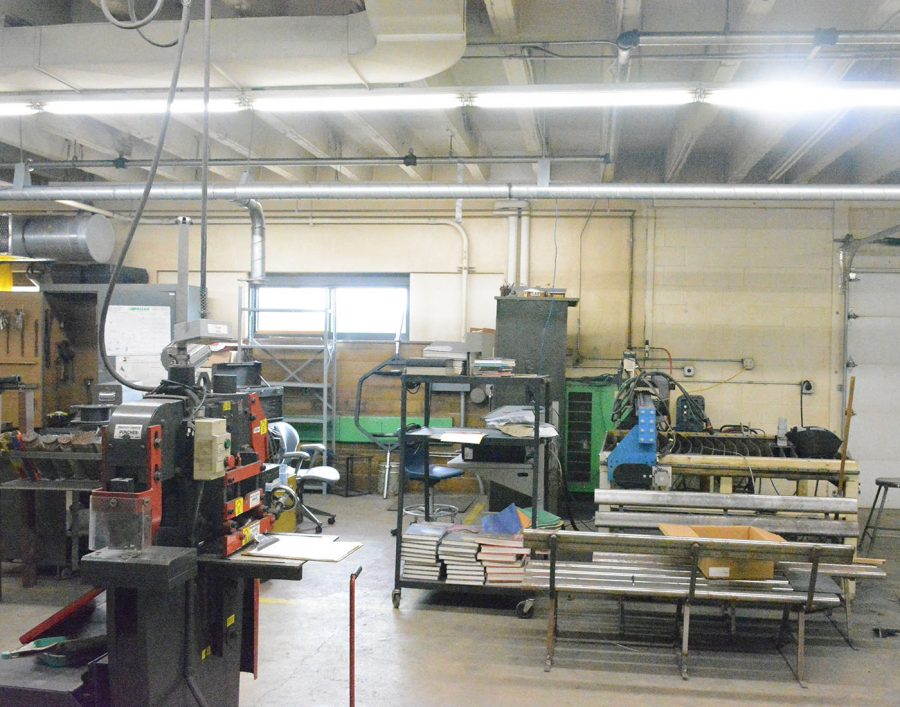The need for trade schools
November 13, 2018
Along with the start of a new school year comes the next incoming senior class, and consequently, another search for further education. A lot of people advocate for the standard four year degree earned from attending a university, but what it is important to keep in mind that that road isn’t for all students. Looking into the other options for students who do not want to follow the normal path is important because each student has different goals for their future. One option that seems to be laying low, but is also a great alternative to a four year degree at a university, would be trade schools.
Trade schools are environments dedicated to teaching skills specifically designed to help their students excel in a particular job or career. Common trade schools jobs are electricians, plumbers and more. These jobs are a possible route to take, but there’s much more opportunity than meets the eye. People also have the potential to become web developers, dental hygienists and much more.
What most high school students do not realize is the potential to receive the education they want, at a fraction of the cost by going to a trade school. Human resources representative Kris Morgan from Cybex located in Owatonna said, “There are many entry level jobs for students straight out of high school, but then there is jobs in specialized positions such as welders that require more of an education.” It is no secret that college prices on the rise year after year, and according to the Business Insider, “There is almost a 300% price increase since the 1980’s.” With these prices prevalent, trade schools should be given a bigger name. In some cases, young professionals begin their career with only about one-fourth of the price paid for schooling compared to a four year university.
Trade schools are commonly swept under the rug because people often associate more education (or more expensive education) with a higher paying salary, or society has the “you’re too smart for that” mentality. These tend to drive people away from the land of opportunity found within trade schools. Students usually do not realize they can be missing out on a cheaper education alternative, with an adequate paying salary, to go along with it. The high school atmosphere could also be contributing to the negative connotation with trade schools.
After a few years spent in high school, students are pushed into thinking, “College, college, college.” Most teachers and other faculty members alike would push students to follow in the path of a four year college. Neglecting the different pathways does not necessarily seem intentional. Instead, it is a lot easier to advocate for a four year degree when most members of the staff traveled the same path. Many local Owatonna businesses are looking for good workers. Whether students plan on attending a four year university, or would rather look into other opportunities, they should examine all possibilities to find something that they are passionate about.
A machining degree can be completed in a two year program and is used in many businesses in the Owatonna area
Trades at OHS
OHS offers a variety of classes that pertain to career paths in fields such as agriculture, industrial arts, and family and consumer science courses. Most of these departments have been thriving after their numerous years of being offered at OHS, but the Industrial Arts department is struggling. OHS used to have three industrial technology teachers in the year 2013, but since then that number has dwindled down to only one. The auto program suffered a similar downfall; currently the OHS offers zero courses regarding auto mechanics. In past years, the Industrial Arts department has been losing numbers both staff and student participation. Senior Dakota Savoie said, “I would say that I would not find myself following in a career path with the industrial tech field, but that doesn’t mean the class should be taken away because there is so much more to just taking it for a career. You can take the skills acquired into other life experiences too.”
The decrease of trade electives over the years, has had impacts on the departments. Ms. Denise Lage said, “We continue to strengthen our career tech. ed. programs, and we are continuing to see those numbers go up. The challenge is going to be as people retire, trying to find replacement teachers.” Jobs in the trade school fields are continuing to pay well, so the problem lies in the fact that there is more money to be made working in the field rather than teaching it. When people see how successful and large the industries are they are drawn in.
The success in the industry is apparent, but the OHS industrial tech. department struggles nevertheless. Mr. Mark Randall said, “For one thing with our industrial or tech education classes it is harder to find teachers, so all we have really done is we have shifted small engines and made it so an AG teacher can teach that.” In order to compensate for the lack of teachers in the field, the faculty has resorted to moving existing teachers into those places. Mrs. Liz Tinaglia said, “There are a lot of statistics coming up saying that agriculture careers are one of the largest areas of employers. They say like 23 million jobs are in agriculture, and that’s including other CTE areas too.” The booming agriculture field is indicative of the success of other trade areas as well, reminding students of the success in this route.

